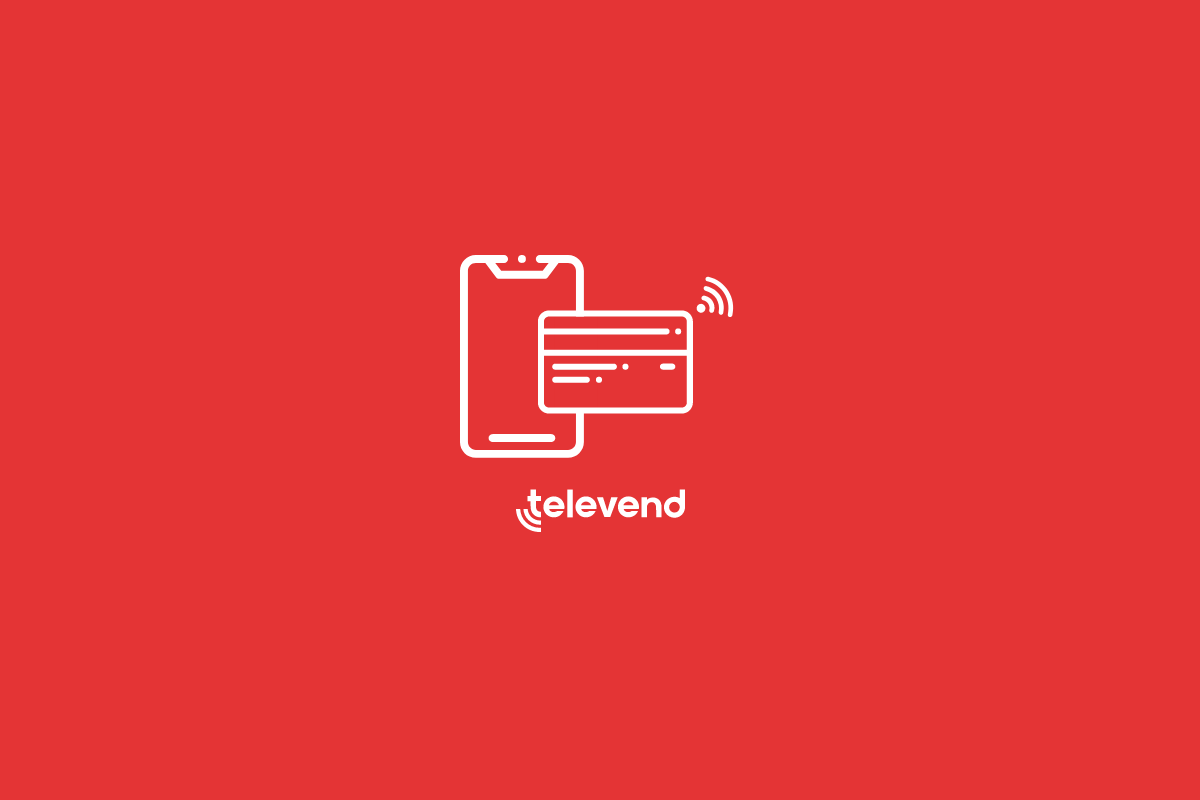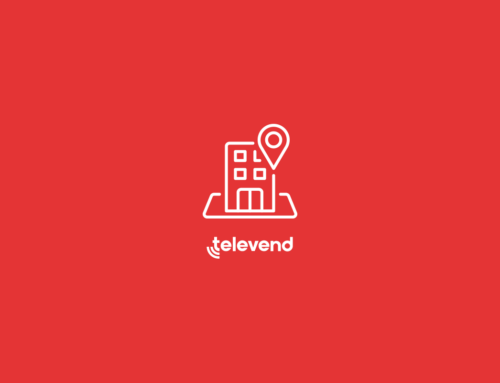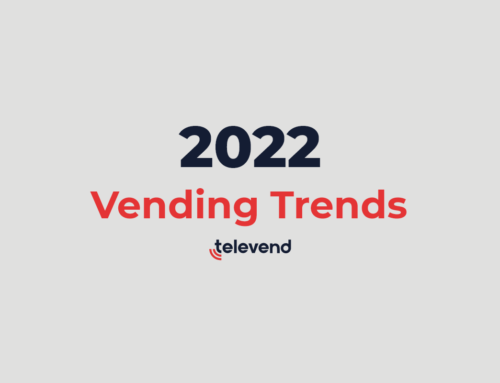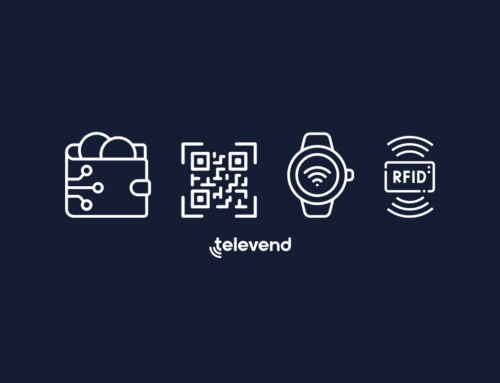As cashless vending became the buzzword of the industry and many companies have already started their cashless journey, some questions have probably popped up in your head: Should I do it? How can I make it happen? In this post, we have summarized a couple of things you need to take into account before starting your cashless transition.
How to Adapt Your Cashless Vending Strategy to Your Sales?
When considering going cashless, you need to figure out the costs related to processing every transaction, including associated bank and other fees. The biggest obstacles are relatively high acquirer and interchange fees for a small value of vending transactions. Depending on the country, these fees range from 2-5% of each sale and contain a fixed amount you need to pay per transaction.
Big companies have some leeway to negotiate with banks, but smaller businesses usually have no leverage and just have to accept what is offered. Typically, retail businesses with a profit margin of around 10% on products sold, having a 1% increase on processing fees can translate to a 10% drop in profitability.
The solution to this problem could be batch credit card processing. Instead of processing each small transaction separately, businesses can reduce costs by processing all their authorized transactions for the day at once.
It’s also a good idea to test new payment methods with a few machines that you expect to have sufficient sales to cover payment processing costs. Usually, those are machines in high-traffic, transient locations with multiple-vending capabilities, like airports, train stations, and main streets.
Despite all the challenges, many smaller companies that took a chance of investing in cashless have already seen the benefits of offering additional payment methods. For instance, Vending Market Watch reports how Advantage Vending, a vending operator with a modest number of machines, has invested in cashless payment despite their size. Their CEO says how they have started with a few most profitable machines adding more each year and explains: If you have a machine doing $45 per week in sales, it’s worth getting a cashless device.”

Which Payment Provider to Choose?
Now that you jotted down your sales numbers, you can start thinking about a cashless payment provider. A payment provider takes care of every transaction at your machine and makes sure it goes through a standardized, secured process before landing into your merchant account.
What is a Merchant Account and How to Choose One?
A merchant account is a business bank account that allows businesses to accept and process digital payment transactions. Vending companies (merchants) that want to offer cashless payments for their goods or services must establish a merchant account with a bank called a merchant acquirer or acquiring bank.
Not every merchant services account is designed the same way. The terms depend on the payment processing needs of your business, the type of business you run, and the size of your business. Small merchant accounts have different needs than enterprise businesses. Moreover, different merchant banks offer different terms, including per-transaction costs, bank card processing network, and other monthly or annual fees for various services.
Based on those needs and conditions, you will have to choose between using a payment gateway or an integrated payment solution. We’ll cover the differences between these two in the following paragraphs.
How to Choose Between Payment Gateway and Integrated Payment Solution
A payment gateway is a mechanism that acts as the middleman between the two banks – the acquirer or merchant bank and the issuer, which is the consumer’s bank. Merchants typically use payment gateways when a direct connection to the processor is costly or time-consuming. The advantage of a gateway is that it is a plug-and-play solution that eliminates the need for implementing all the necessary software, hardware, servers, and security protocols for payment processing.
However, with an integrated payment solution, a merchant can connect directly to the payment processor. An integrated solution virtually eliminates the need for a credit card payment gateway because transactions are sent directly from the POS to the payment processor. Integrated solutions often have built-in advantages like reporting, customer service, and other customizable features.
An integrated solution may cost more upfront but may be worth it to some merchants, considering their custom needs. A gateway solution may be the best option for merchants willing to sacrifice lower costs and customization for a turnkey solution. So, before opening your merchant account, consider your cost structure and time frame for implementing a payment solution.
How to Pick a Secure Payment Provider?
When choosing your cashless payment provider, be it a gateway or integrated solution, you need to make sure it has an anti-fraud and a refund policy that protects the safety and rights of your consumers.
Our advice is to look for providers that have been audited by Payment Card Industry and certified with their Data Security Standard (PCI DSS). That’s the set of information security standards for organizations that handle major credit card schemes. It ensures that credit card information is secure from entering the system until the transaction is complete.
One of the essential PCI DSS requirements is P2PE or point-to-point encryption. It’s a security mechanism that ensures the encryption of payment card data from the start to the finish of a transaction. It requires the encryption of payment card data immediately after use at the point-of-sale terminal. It cannot be decrypted until securely transported to and processed by the payment processor.
Televised provides PCI DSS accredited payment gateway with P2PE encryption. Your consumers can rely on the security of our payment processing, quick support if anything goes wrong, and a refund if a vend didn’t happen.
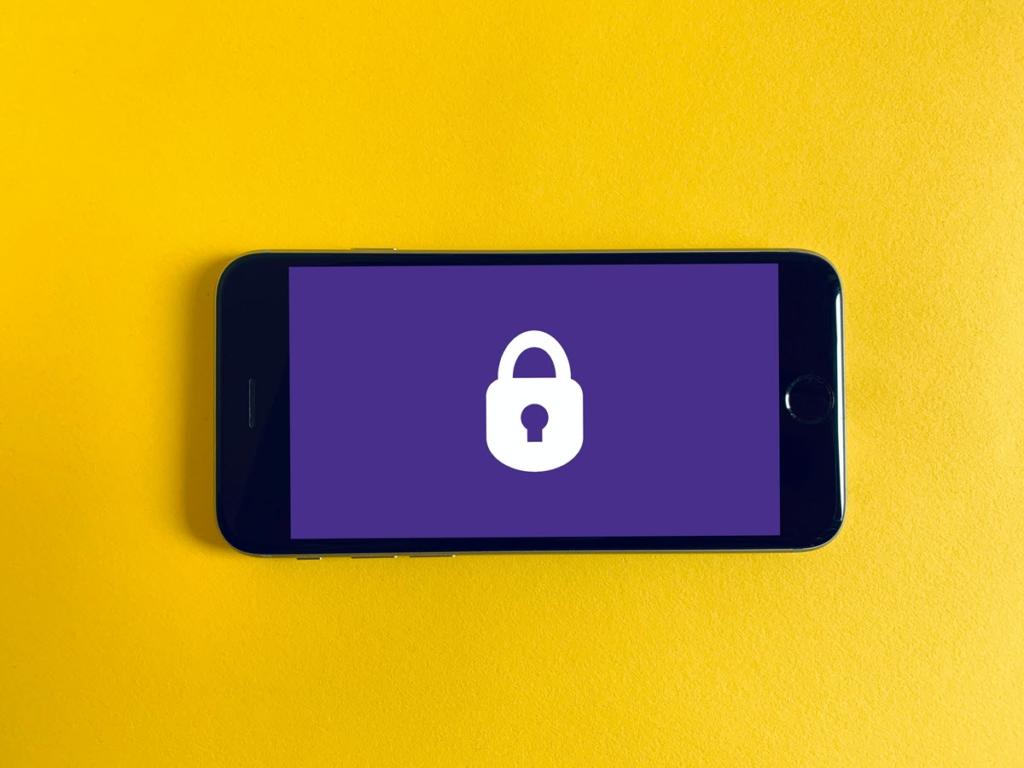
Which Cashless Vending Solutions Should You Provide?
One of the critical questions when going cashless for every vendor should be – which methods your machines should support. Digital payment methods are so versatile these days, so you can pick between dozens of options. To simplify things, we have divided cashless payment options into three major groups:
- Credit card payment: Paying with credit cards like Visa, Mastercard, Maestro, and AMEX. This is the most common cashless type, so it’s the best option if you want to reach the most people.
- Mobile payment: Prepaid and QR code-based payment such as Google Pay, Apple Pay, Revolut, PayPal, Stripe. Read more about the benefits of mobile payment in one of our previous blogs.
- Loyalty payment: Digital wallets and other methods of incentivized payment schemes for closed and open-loop environments. This is the best if you want to boost loyalty within your audience.
Televend’s payment solution supports a variety of payment methods:
- Major credit card schemes like Visa, Mastercard, Maestro, and AMEX
- Mobile options such as Google Pay and Apple Pay
- QR codes as a part of different promotions for a broad audience or employees
- Televend digital wallet where consumers can earn points through different campaigns and incentives
- RFID cards for closed-loop environments – offices, schools, or universities

Is Cashless Technology Compatible with your Machines?
So, you have picked your payment provider. What are the next steps? Do you need to buy completely new machines? The answer is no. You can upgrade your current machines with 3rd party vending telemetry solutions and bank card readers. Let’s dig into some technical requirements.
Which Bank Card Readers to Choose?
First things first – you need to choose the right type of cashless reader. Based on your typical use case, you’ll have a couple of card readers at your disposal.
Think about the payment methods you’d like to offer to your consumers. Credit card payment is an obvious choice. Modern cards use chip technology, so you no longer need to worry about magnetic stripes. The card tapping mechanism allows the card reader to accept payments by simply tapping a payment card against it. If you want to offer mobile payment, you’ll have to use the tap-to-pay mechanism for mobile devices.
To offer any of these two options, you’ll need to install an NFC reader, which stands for Near Field Communication. NFC reader is a standard for the vending market, and it comes in a couple of variations – with a PIN pad, a display, or a simple device with just a tap option.
If you’d like to serve a broad audience, an NFC reader is your solution. But, what about closed-loop environments that target specific people, such as workplaces, schools, or event venues like conferences? In that case, you’ll need to install a radio frequency identification (RFID) reader. The RFID reader is a network-connected device that uses radio waves to transmit signals to identify an object. In your case, that would be a prepaid RFID card or key chain distributed among the closed group of people who can access and buy on your machines.
Televend Pay offers two types of cashless payment readers for each of the mentioned scenarios. TPAY 10 is an RFID card reader for closed-loop systems, ideal for work and education environments. It works with high and low signal recipients. TPAY 20 is a combined RFID and NFC reader suited for both closed-loop and open-loop environments. It can work with credit and debit cards, mobile payment methods, digital wallets, and prepaid cards.
What about Internet Connection?
Moreover, you need to think about the internet connection. Once the card reader has read and encrypted the card data, the next step is to transmit the information from the vending machine. Due to the nature of vending, the most practical way of getting the data out of the machine is through a cellular modem that can send the information along the way.
A Wide Area Network connection (WAN) is needed to transmit the encrypted card data from the vending site to confirm and complete the transaction. A WAN cellular connection works the same way as most cell phones, via a “SIM” card.
However, as we have all experienced, cellular signals have “dead” zones causing interruptions in the communication of transactional data. Therefore, sometimes it may be desirable to network multiple vending machines together to create a Local Area Network (LAN). Using a form of wireless LAN technology, it may be possible to “reach” a machine and connect to a WAN unit with a solid signal.
Luckily, you don’t need to worry about the internet connection required for payment processing if you use a telemetry device such as our Televend Box. Data can be transmitted through the installed Televend Box’s antenna, which enables stable signal reception no matter where your machine is located. You can choose between 2G, 3G, and 4G devices.
How to Boost Consumer Satisfaction with Cashless Vending?
If you invest in cashless technology, it makes sense to adequately promote the additional payment options to your consumers. You can implement a couple of tactics to onboard consumers and ultimately boost their satisfaction.
You could encourage cashless payment options at the machines by pointing out the types of card brands accepted, how secure is the payment network, what to do if the vend is not processed, etc. All these „simple“ messages can positively affect the desired use of the machine.
It can be beneficial to highlight whether consumers can preselect a product first and pay after, which is a method they’re used to in a classic retail environment. This way, consumers can pay for a preselected product rather than tapping their card first and then selecting the product quickly enough before the time limit ends. Ultimately, preselection reduces the number of failed vends and keeps a consumer satisfaction level high.
If you want to bring it all to the next level, you can use the implemented system to boost consumer loyalty. Different digital wallets can act as an excellent loyalty platform for a broad audience or employees. Televend Vending Wallet is a mobile app where consumers can collect points by purchasing vends at your machines and use them instead of cash. On top of that, you can improve consumer retention with Wallet Office, our back-office software, by customizing campaigns for specific users and tracking user satisfaction after each purchase.
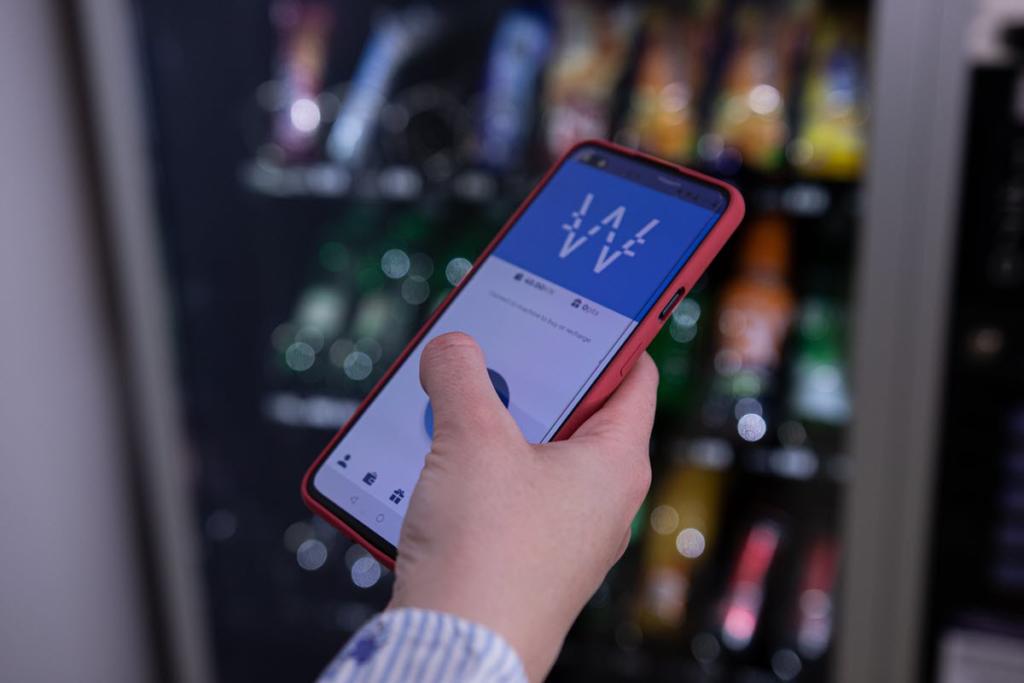
By using Televend’s complete payment service package, including the telemetry device, readers, gateway, and digital wallet, you can save money on fees and get central support from our team. If you want to learn more about our solutions and appreciate the in-person approach, you can schedule a demo.
As cashless vending became the buzzword of the industry and many companies have already started their cashless journey, some questions have probably popped up in your head: Should I do it? How can I make it happen? In this post, we have summarized a couple of things you need to take into account before starting your cashless transition.
How to Adapt Your Cashless Vending Strategy to Your Sales?
When considering going cashless, you need to figure out the costs related to processing every transaction, including associated bank and other fees. The biggest obstacles are relatively high acquirer and interchange fees for a small value of vending transactions. Depending on the country, these fees range from 2-5% of each sale and contain a fixed amount you need to pay per transaction.
Big companies have some leeway to negotiate with banks, but smaller businesses usually have no leverage and just have to accept what is offered. Typically, retail businesses with a profit margin of around 10% on products sold, having a 1% increase on processing fees can translate to a 10% drop in profitability.
The solution to this problem could be batch credit card processing. Instead of processing each small transaction separately, businesses can reduce costs by processing all their authorized transactions for the day at once.
It’s also a good idea to test new payment methods with a few machines that you expect to have sufficient sales to cover payment processing costs. Usually, those are machines in high-traffic, transient locations with multiple-vending capabilities, like airports, train stations, and main streets.
Despite all the challenges, many smaller companies that took a chance of investing in cashless have already seen the benefits of offering additional payment methods. For instance, Vending Market Watch reports how Advantage Vending, a vending operator with a modest number of machines, has invested in cashless payment despite their size. Their CEO says how they have started with a few most profitable machines adding more each year and explains: If you have a machine doing $45 per week in sales, it’s worth getting a cashless device.”

Which Payment Provider to Choose?
Now that you jotted down your sales numbers, you can start thinking about a cashless payment provider. A payment provider takes care of every transaction at your machine and makes sure it goes through a standardized, secured process before landing into your merchant account.
What is a Merchant Account and How to Choose One?
A merchant account is a business bank account that allows businesses to accept and process digital payment transactions. Vending companies (merchants) that want to offer cashless payments for their goods or services must establish a merchant account with a bank called a merchant acquirer or acquiring bank.
Not every merchant services account is designed the same way. The terms depend on the payment processing needs of your business, the type of business you run, and the size of your business. Small merchant accounts have different needs than enterprise businesses. Moreover, different merchant banks offer different terms, including per-transaction costs, bank card processing network, and other monthly or annual fees for various services.
Based on those needs and conditions, you will have to choose between using a payment gateway or an integrated payment solution. We’ll cover the differences between these two in the following paragraphs.
How to Choose Between Payment Gateway and Integrated Payment Solution
A payment gateway is a mechanism that acts as the middleman between the two banks – the acquirer or merchant bank and the issuer, which is the consumer’s bank. Merchants typically use payment gateways when a direct connection to the processor is costly or time-consuming. The advantage of a gateway is that it is a plug-and-play solution that eliminates the need for implementing all the necessary software, hardware, servers, and security protocols for payment processing.
However, with an integrated payment solution, a merchant can connect directly to the payment processor. An integrated solution virtually eliminates the need for a credit card payment gateway because transactions are sent directly from the POS to the payment processor. Integrated solutions often have built-in advantages like reporting, customer service, and other customizable features.
An integrated solution may cost more upfront but may be worth it to some merchants, considering their custom needs. A gateway solution may be the best option for merchants willing to sacrifice lower costs and customization for a turnkey solution. So, before opening your merchant account, consider your cost structure and time frame for implementing a payment solution.
How to Pick a Secure Payment Provider?
When choosing your cashless payment provider, be it a gateway or integrated solution, you need to make sure it has an anti-fraud and a refund policy that protects the safety and rights of your consumers.
Our advice is to look for providers that have been audited by Payment Card Industry and certified with their Data Security Standard (PCI DSS). That’s the set of information security standards for organizations that handle major credit card schemes. It ensures that credit card information is secure from entering the system until the transaction is complete.
One of the essential PCI DSS requirements is P2PE or point-to-point encryption. It’s a security mechanism that ensures the encryption of payment card data from the start to the finish of a transaction. It requires the encryption of payment card data immediately after use at the point-of-sale terminal. It cannot be decrypted until securely transported to and processed by the payment processor.
Televised provides PCI DSS accredited payment gateway with P2PE encryption. Your consumers can rely on the security of our payment processing, quick support if anything goes wrong, and a refund if a vend didn’t happen.

Which Cashless Vending Solutions Should You Provide?
One of the critical questions when going cashless for every vendor should be – which methods your machines should support. Digital payment methods are so versatile these days, so you can pick between dozens of options. To simplify things, we have divided cashless payment options into three major groups:
- Credit card payment: Paying with credit cards like Visa, Mastercard, Maestro, and AMEX. This is the most common cashless type, so it’s the best option if you want to reach the most people.
- Mobile payment: Prepaid and QR code-based payment such as Google Pay, Apple Pay, Revolut, PayPal, Stripe. Read more about the benefits of mobile payment in one of our previous blogs.
- Loyalty payment: Digital wallets and other methods of incentivized payment schemes for closed and open-loop environments. This is the best if you want to boost loyalty within your audience.
Televend’s payment solution supports a variety of payment methods:
- Major credit card schemes like Visa, Mastercard, Maestro, and AMEX
- Mobile options such as Google Pay and Apple Pay
- QR codes as a part of different promotions for a broad audience or employees
- Televend digital wallet where consumers can earn points through different campaigns and incentives
- RFID cards for closed-loop environments – offices, schools, or universities

Is Cashless Technology Compatible with your Machines?
So, you have picked your payment provider. What are the next steps? Do you need to buy completely new machines? The answer is no. You can upgrade your current machines with 3rd party vending telemetry solutions and bank card readers. Let’s dig into some technical requirements.
Which Bank Card Readers to Choose?
First things first – you need to choose the right type of cashless reader. Based on your typical use case, you’ll have a couple of card readers at your disposal.
Think about the payment methods you’d like to offer to your consumers. Credit card payment is an obvious choice. Modern cards use chip technology, so you no longer need to worry about magnetic stripes. The card tapping mechanism allows the card reader to accept payments by simply tapping a payment card against it. If you want to offer mobile payment, you’ll have to use the tap-to-pay mechanism for mobile devices.
To offer any of these two options, you’ll need to install an NFC reader, which stands for Near Field Communication. NFC reader is a standard for the vending market, and it comes in a couple of variations – with a PIN pad, a display, or a simple device with just a tap option.
If you’d like to serve a broad audience, an NFC reader is your solution. But, what about closed-loop environments that target specific people, such as workplaces, schools, or event venues like conferences? In that case, you’ll need to install a radio frequency identification (RFID) reader. The RFID reader is a network-connected device that uses radio waves to transmit signals to identify an object. In your case, that would be a prepaid RFID card or key chain distributed among the closed group of people who can access and buy on your machines.
Televend Pay offers two types of cashless payment readers for each of the mentioned scenarios. TPAY 10 is an RFID card reader for closed-loop systems, ideal for work and education environments. It works with high and low signal recipients. TPAY 20 is a combined RFID and NFC reader suited for both closed-loop and open-loop environments. It can work with credit and debit cards, mobile payment methods, digital wallets, and prepaid cards.
What about Internet Connection?
Moreover, you need to think about the internet connection. Once the card reader has read and encrypted the card data, the next step is to transmit the information from the vending machine. Due to the nature of vending, the most practical way of getting the data out of the machine is through a cellular modem that can send the information along the way.
A Wide Area Network connection (WAN) is needed to transmit the encrypted card data from the vending site to confirm and complete the transaction. A WAN cellular connection works the same way as most cell phones, via a “SIM” card.
However, as we have all experienced, cellular signals have “dead” zones causing interruptions in the communication of transactional data. Therefore, sometimes it may be desirable to network multiple vending machines together to create a Local Area Network (LAN). Using a form of wireless LAN technology, it may be possible to “reach” a machine and connect to a WAN unit with a solid signal.
Luckily, you don’t need to worry about the internet connection required for payment processing if you use a telemetry device such as our Televend Box. Data can be transmitted through the installed Televend Box’s antenna, which enables stable signal reception no matter where your machine is located. You can choose between 2G, 3G, and 4G devices.
How to Boost Consumer Satisfaction with Cashless Vending?
If you invest in cashless technology, it makes sense to adequately promote the additional payment options to your consumers. You can implement a couple of tactics to onboard consumers and ultimately boost their satisfaction.
You could encourage cashless payment options at the machines by pointing out the types of card brands accepted, how secure is the payment network, what to do if the vend is not processed, etc. All these „simple“ messages can positively affect the desired use of the machine.
It can be beneficial to highlight whether consumers can preselect a product first and pay after, which is a method they’re used to in a classic retail environment. This way, consumers can pay for a preselected product rather than tapping their card first and then selecting the product quickly enough before the time limit ends. Ultimately, preselection reduces the number of failed vends and keeps a consumer satisfaction level high.
If you want to bring it all to the next level, you can use the implemented system to boost consumer loyalty. Different digital wallets can act as an excellent loyalty platform for a broad audience or employees. Televend Vending Wallet is a mobile app where consumers can collect points by purchasing vends at your machines and use them instead of cash. On top of that, you can improve consumer retention with Wallet Office, our back-office software, by customizing campaigns for specific users and tracking user satisfaction after each purchase.

By using Televend’s complete payment service package, including the telemetry device, readers, gateway, and digital wallet, you can save money on fees and get central support from our team. If you want to learn more about our solutions and appreciate the in-person approach, you can schedule a demo.
Table of Contents

Subscribe To Our Newsletter
Sign up to our monthly business newsletter for useful articles, tips, and tricks for boosting your business success.
By subscribing, you consent to receive email marketing communications from Televend. For more
information please read our Privacy Policy.
